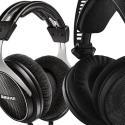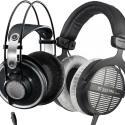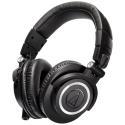Open Back vs Closed Back Headphones - First Hand Experience
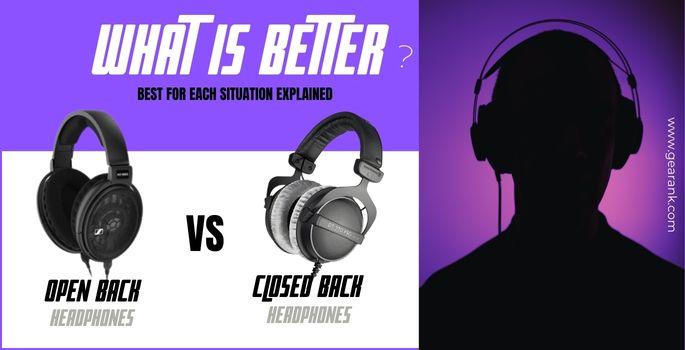
Are open-back or closed-back headphones better? It's a perpetual debate among audiophiles, that's for sure. But the good news is that you're one step closer to choosing the best headphones.
Whether you're a budding producer, DJ Music, commuter, or casual listener, deciding between open back vs closed back headphones matters.
A few important factors here include sound quality, listening experience, and long periods of use. And these can be the difference between enjoying your new pair of cans or wishing you grabbed a different pair.
So, for everything you need to know about closed back vs open back headphones for music production, this guide explains what they are, the differences and benefits, and, last but not least, which ones you should get.
What are Open-Back Headphones?
Open back headphones have a fundamental difference in their design compared to closed back headphones. The difference is that the ear cups let air pass through.
This provides a more natural sound because the open back design prevents low frequency build-up.
Low frequencies (bass notes) escape through the ear cups instead of resonating in your ears, negatively affecting audio quality if the chamber is poorly tuned.
As a result, open back headphones can also be more comfortable - especially when used for extended music listening and production sessions.
The open design doesn't close off your earholes to air, and this can reduce the possibility of earache and ear fatigue.
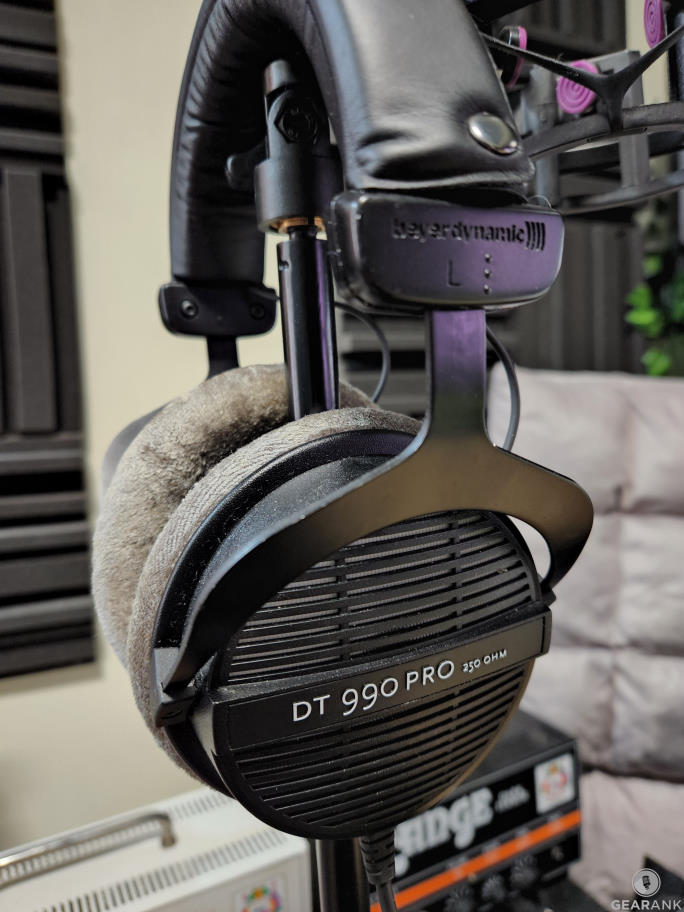
What are Closed-Back Headphones?
Closed back headphones are the opposite of open back headphones. Instead of an open back design that lets air and sound pass through, closed back headphones have a closed-chamber design that prevents air and sound from passing through.
The best closed back headphones have chambers designed and tuned for the best sound.
This also provides noise isolation, which is good if you don't want to hear outside noise.This lets you focus more on the audio, which is important when plugging an amp to headphones. This is also better for gaming, watching videos, and similar applications.
Since low frequencies don't escape through the ear cups, closed back headphones also tend to have better bass response.
This makes closed back headphones better suited for hearing more bass or listening on public transport.
But the closed back design doesn't just stop external noise and reduces sound leakage from the headphones themselves - providing a more private listening experience.
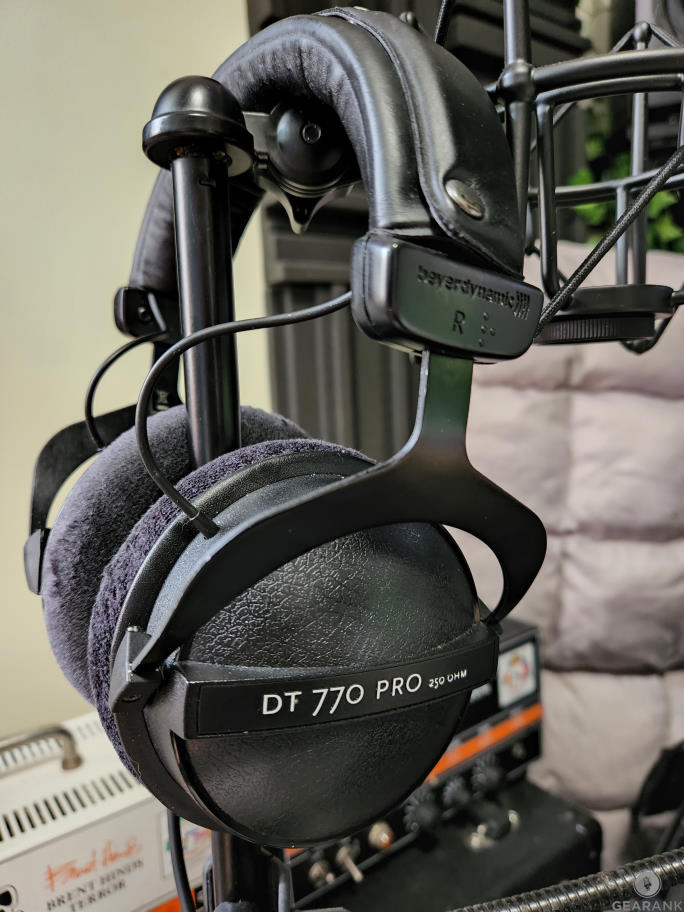
The Differences: Open vs Closed-Back Headphones
Now that you know what they are, what are the differences between open back headphones and closed back headphones?
Here's a list of the main differences summarized:
-
Open back headphones let air and sound pass through the ear cups, including ambient noise, unlike closed back headphones, which do not.
-
Open back headphones have a more natural sound quality, while closed back headphones have a better bass response.
-
Open back headphones are more comfortable for more extended periods of listening, while closed back headphones can cause ear fatigue or earache.
-
Open back headphones leak sound, unlike closed back headphones, which provide a more private listening experience.
-
Open backs do not have passive noise canceling, unlike closed backs.
Need help determining what noise canceling headphones are? That leads us to the next section.
What are Noise Canceling Headphones?
Noise canceling headphones are headphones that are designed to block out ambient noise. They're not typically used in music production.
Still, they're good to avoid experiencing background noise while listening to music, like traffic, the hum of your air conditioner, or your neighbor's dog barking.
Due to this, headphones with noise canceling give you a more private experience - mainly for casual listening. You'll hear the music louder and clearer and won't be distracted by any outside noise happening around you.
There are two Noise-canceling headphone types: active noise cancellation and passive noise cancellation. And they're worth understanding if noise cancelation sounds like a feature you're interested in for casual music listening.
Passive vs Active Noise Canceling Headphones - What's the Difference
Both active and passive noise cancellation headphones block out unwanted sound for casual music listening, but there is a crucial difference between the two:
-
Active Noise Cancellation Headphones
Active noice cancellations headphones have microphones that listen to external sound before canceling it out (with inverted sound waves) so you don't hear it.
-
Passive Noise Cancellation Headphones
Passive Noise Cancellation Headphones have a tight-fitting headphone design intended to conform to your ears and physically block out external sound.
As mentioned earlier, noise cancellation is a feature found on many over ear headphones with a closed back design, unlike most open back headphones.
So Which one is better?
Headphones with active noise cancellation are better for eliminating ambient sounds but can be less comfortable because the headphone design requires a good seal around your ears.
Because of the technology, however, these headphones use more power.
On the other hand, headphones with passive noise cancellation are more comfortable but typically less good for eliminating background sound. Despite that, they use less power and will last longer if running on a battery.
Still, noise cancellation headphones, or even noise cancellation earphones for that matter, are not the best choice for producing music at home or in a studio due to how the technology can alter the sound accuracy of the audio. This is a major consideration when choosing between headphones vs earphones.
What are Semi Open Back Headphones?
Semi open headphones are another pair of cans worth knowing about. And if the name doesn't give it away, semi open back headphones offer the best of both worlds by balancing an open back and closed back design.
As a result, semi open headphones have a different sound quality than closed back headphones. The ear cups let air and sound pass through but are better at minimizing sound leakage than open back headphones.
Don't forget about another important factor in choosing a headphone type, and it is comfort comfort and comfort. I repeated it three times for emphasis, there's no point to a great sounding pair of cans that you feels awkward or uncomfortable.
Semi open headphones seem the best choice or safe bet, but this balance has disadvantages. And you won't get the full benefits of an open back headphone design or a closed back headphone design.
The Pros and Cons of Open Back Headphones
Still trying to figure out what over ear headphones to get? Choosing just one pair of headphones can take a lot of work.
But no problem - let's review the pros and cons of each headphone design to help you decide whether you prefer open back headphones or closed back headphones.
The Pros of Open Back Headphones
-
You'll experience a more natural, accurate sound
-
You'll find them better for critical listening (music producing)
-
You'll find them more comfortable on your ears for more extended periods of listening
-
You might find them lighter on your head
The Cons of Open Back Headphones
-
You'll hear sounds from the outside world (ambient sound)
-
Your music might be heard by people at home or in public spaces
The Pros and Cons of Closed Back Headphones
The Pros of Closed Back Headphones
-
You'll hear more bass
-
You'll get better noise isolation, i.e., you won't be distracted by ambient noise
-
You'll get to listen in private - people around you won't hear what you're listening to
-
You'll be able to choose headphones with noise cancellation
The Cons of Closed Back Headphones
-
You'll get a less natural, accurate sound (a result of sound isolation)
-
You might experience earache or ear fatigue
-
You might find them heavier or tighter on your head
Open Back Headphones vs Closed - Which Should You Use?
Ultimately, it boils down to what you'll be using them for when it comes to open vs closed back headphones. It's the main factor to consider before deciding on a pair, so here are some key points to take away.
Open headphones are better for audio professionals, especially those who need a pair of monitoring headphones to back up their studio monitors. They're also ideal for long listening sessions and audiophiles wanting the best, most natural sound.
Closed headphones are better for casual listeners, commuters, and those who don't want outside sounds or audio leakage. This includes DJs and people who don't want others hearing what they're listening to. Closed design headphones are also ideal as gaming headphones, as they offer more immersion.
This is the reason why closed back headphones for gaming are super popular. This type of headphones also emphasizes the bass better.
Conclusion
Open back headphones and closed back headphones are different from each other, as each has its benefits and drawbacks.
The most important factor for choosing a great pair of closed vs open back headphones is what you'll use them for.
And if that's music production, the main thing to weigh up is whether you need to block out external sound for monitoring or have a more natural sound for mixing and mastering.
Ready to make your selection? Check out The Best Open Back Headphones and The Best Closed Back Headphones.



